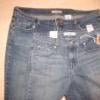Search the Community
Showing results for 'vegetarian'.
Found 4,910 results
-


I Am First Week Post Op Searching For Fellow Vegetarian Banders
Mikkat replied to Mikkat's topic in POST-Operation Weight Loss Surgery Q&A
Cool good to KNOW!!..can't wait to be on solid food again...I have two days more before I start the "mushier" food....I can't wait to be an actual healthy vegetarian because I think being a vegetarian over 22 years...I was more of a carbitarian...lol....glad to see others out there!! -


I Am First Week Post Op Searching For Fellow Vegetarian Banders
Allison0927 replied to Mikkat's topic in POST-Operation Weight Loss Surgery Q&A
i'm lacto ovo vegetarian too!!! (will eat dairy but no meat or fish of any kind). Doing great and there's plenty for us to eat and keep our protein up. -


I Am First Week Post Op Searching For Fellow Vegetarian Banders
Mikkat posted a topic in POST-Operation Weight Loss Surgery Q&A
Hello everyone..I am five days post open really sore...but this shall pass...anyways hoping to find some vegetarian lap banders for menu ideas...dairy ok...but meat..including fish....anybody out there? -


Old-Timers (3+ Years Banded) Recommitting To The Bandster Lifestyle
lellow replied to lellow's topic in LAP-BAND Surgery Forums
We're all driving AB! Welcome! What did you get done this time? Well, my man made homemade vegetarian pizza last night and I brought two small pieces into work today for lunch. I bet it won't even touch the sides but it'll stop the tummy growling and that's all I care about. Then I'm going for a 3km power walk around the city. I hope it's not raining though.... -


Vegetarian Food Ideas
Allison0927 replied to jadeink's topic in POST-Operation Weight Loss Surgery Q&A
i'm lacto ovo vegetarian - no meat, poultry or sea food but i eat dairy. For my mushies i did vegetarian refried beans (low fat cheese and sour cream on it - maybe salsa) - light mashed potatoes/butter, light yogurt, protein shakes (I do EAS AdvantEdge Carb control - strawberry, vanilla and light chocolate), morning star fake chicken strips (the grilled kind you would put in a stir fry - i ate a ton of them during the soft food time after surgery). I would dip the strips in low fat sour cream yum! -


Vegetarian Food Ideas
laddie1229 replied to jadeink's topic in POST-Operation Weight Loss Surgery Q&A
LB4me, I'm not a vegetarian but those sound yummy and am going to try them. -
I'm not a vegetarian, but here are a few ideas. Soft fish, Tilapia, salmon, is always good. Try fat free vegetarian refried Beans. Mix in some salsa to loosen them up. A bit of FF cheese and sour cream, very good, filling and high in Protein. Mashed caulifower is always good. Cook in veggie stock and mash with a little FF sour cream. Grill a portabello mushroom, top with a slice of tomato, some basil and some mozzerella cheese and broil til melted. Try tuna mixed with mashed avocado. Make vegetarian chili with black beans (high in protein) and lots of tomatoes. You may also want to get unflavored Protein powder to add to meals to get your protein in.
-
Sorry i forgot to add obviously by the title im a vegetarian actually pescatarian i eat fish..if that helps..and i love almond dark chocolate soy milk..i just need some reinforcment and food info..maybe there are some friendly veggie heads:)
-
Hi i just got banded 6 days ago and id like to start planning my shopping menu..Does anyone have any ideas for all my stages .. started my journey at 245lb im 5'2.. im now 213 but im starving ....but im gonna keep to it and stay positive..I have a great fiance...
-
Although not a vegetarian, I have started using TVP in my families food to boost the Protein, cut the cost, cut down on fat etc. I but the already flavored TVP (Taco) and add it to my ground beef after cooking-the seasoning serves to also season my ground beef. I started out small, but now we do 50/50. This works for tacos, Soups, spaghetti sauce whatever. My family is adults so they know it is in there, but even so they swear they can't tell any difference in taste or texture. I have also bought the sausage flavored and added it to soups, or spaghetti sauce. As for the PB2-I have only used it when i was doing shakes. I have never actually tried it as Peanut Butter, but I had better since I bought a 2 pound bag!! I have been thinking of making it up and mixing it half and half with real peanut butter.
-
So I know this is unrelated to VSG (well I guess sort of because I was buying veggies for my new eating plan) but I wanted to let you all know so this doesn't happen to you. I happened to be at Walmart last night which I never go to for various reasons, but was stuck because they were the last place to stop before my house. I needed a red bell pepper to cook vegetarian chili and when I got it home and started to cut it open, it was infested with black bugs!!! It was absolutely disgusting. I threw the rest of the produce I bought away. That has never happened to me from any other grocery store, farmers market, etc. so be careful with your future produce purchases from Walmart, if you do shop there. I don't know if the same crop goes to various Walmart stores. Yuck! Yuck! Yuck!!
-
Hello everyone. I am dreaming about my mushie phase that I will be transferring to next week. I have been a vegetarian for the past 4 years and have decided to allow chicken and fish into my diet because I don't like soy and won't get the large amount of Protein I need by eating chick peas. I was wondering if you knew how to prepare chicken/fish so I can eat it during the mushies? Also I read deli meat is allowed, do you have to puree it or can you just roll and chew? Thanks
-


3 Months Out And Sick To Stomach
Lissa replied to crazycatlady8's topic in POST-Operation Weight Loss Surgery Q&A
I think a lot of eating meat after surgery involves getting past the hurdle that it might hurt. I make sure that I have some kind of sauce/moisture for meat and that I cut it into small bites and chew well. My sleeve (Rex) still won't tolerate anything remotely spicy, but I can now eat almost any meat without issues. As Meg said, there are many alternatives for Protein without eating meat. We have quite a few vegetarian sleevers around here. I love to check their group for new ideas. I personally eat a lot of cheese to help boost my protein intake, and I like a babybel in the morning before my Vitamins so that I don't get nauseous. SleevedMom, if you're getting nauseous from just putting the meat in your mouth, do YOU think it's a head issue or do you get sick once you chew up and swallow the meat? If it's a head issue, it may be time for a chat with your nutritionist or doctor about whether you're really ready for meat. It might even be a good idea to talk to a therapist about the meat issue. If it's a physical issue, for instance your tummy gets upset when you eat meat, you may just need to eat more vegetarian for a while. I've seen people who have continued with only protein bars/shakes long-term, and they do lose weight. IME, though, those people are the ones who never transition back to "normal" life. My late friend's sister in law is one of those and the sister in law ends up in the ER regularly because of malnutrition and dehydration. The sister in law says it's "too hard" to get in her Water and to eat normal food. Each time she goes in the hospital, they work on getting her into a routine where she's eating regular food and drinking water. She will comply long enough to get out of the hospital, then she's right back to only eating protein bars and drinking very little. Personally, I think the woman now has anorexia or something similar. It is really important to try to transition to getting your protein from food, but you may need some softer Proteins and some guidance from a nutritionist or therapist to get to that point. I think that is a very natural reaction since we've had such restricted diets before and after surgery. Add in that none of us want to damage our new sleeves and leaks are a terrifying complication, and it's a wonder that any of us ever manage to transition back to "regular" food after surgery! Good luck!! Please let us know how it goes. -


Vegan, Raw Foodie Or Vegetarian?
B-52 replied to GLove's topic in POST-Operation Weight Loss Surgery Q&A
With The band I cannot tolerate meat at all. I'm not a vegetarian, not even sure what the true definition is anymore. When I was at my Dr.s last week, he asked me if I was getting any "Regurgitation" I told him I cannot tolerate any meats, that they always get stuck. He said that is not unusual at all, and did not relate it to my band being too tight or anything. Just taht it was very normal and sees it all the time. So I call myself the "Incidental Vegetarian" -
I wouldn't worry too much about the fat. Someone posted about fat grams per day recently and I shared my thoughts then, too, that it's less important to track fat than it is to track Protein and calories. We don't want to go all out and give ourselves heart disease but let's be realistic here: even on a day when we feel like we've had a lot of fat post op, it's likely nowhere near what we were eating pre op. We need the fat now more than ever because we're not getting it from other sources. It's very tough to go low-fat on a protein based diet! I relied heavily on cheeses when I first got here to Bishkek. We had no good source of meat so we were living the vegetarian lifestyle. I have no easy access to prepared or convenience vegetarian foods in this country. The best I could do was make my own soy milk and tofu, or order vital wheat gluten online and make seitan! And yes, tofu and seitan are good ways to get protein but let's not lie to ourselves and say they're as dense in protein as meat is - you have to make up that slack somewhere. There are only so many bean dishes or hummus spreads I can make and only so many ways I can prepare eggs before I'm tired of them! cheese was critical in reaching those protein goals. I even ate a lot of Peanut Butter, something I don't really care for normally. I still get one Protein shake in each day (two scoops of protein, about 50 grams) because I could not possibly hit my protein goals (90+ grams/day) otherwise. I eat as much cheese as I can. I'm still mad that my lactose intolerance makes cottage cheese impossible for me. I'd eat that day in and day out if I could! As it is I eat a few ounces of hard cheese each day. If you're really concerned about your fat intake, record your food on a site like myfitnesspal and be sure your fat intake isn't too high. So long as I'm not "in the red" on my fat totals when I track, I don't let it bother me much. The people that super-restrict their diets DO get results, but then they get to goal and have to figure out how to eat like normal people. Just eat a balanced diet now and save yourself the trouble. ~Cheri
-
Im curious if the forum has any Vegans, Vegetarians or Raw Foodies out there? Was this your choice before banding or did you convert after banding?
-


How Do You Get Your Protein In?
1shauna1 replied to littlerlou's topic in POST-Operation Weight Loss Surgery Q&A
I have just discovered the Premier Nutrition high protein shakes, they are 160 cals and 30 gms of protein (get them at Costco). I have one a day in the morning because I have a hard time with solids then. of course being a liquid, it doesn't really keep me full. You should try to get the rest of your protein from solids, like chicken, eggs, cheese (sorry, I didn't know if you were a vegetarian; in that case, legumes, tofu)....myfitnesspal is good for tracking, also available free on the blackberry. -


How Much Cheese Do You Eat In A Day?
PreciousCargo replied to Puja's topic in Post-op Diets and Questions
Being a vegetarian also I eat 4-5 oz a cheese a day, preferably with every meal. My favorite meal which I eat often is black beans with Colby cheese. There are also excellent crumbling Mexican cheeses that I prefer often. I also like paneer with spinach and low fat cottage cheese with mash potatoes. Since my surgery I cant stand Greek yogurt or my protein drinks, makes me gag. I am not allowed peanut butter until six months out. I also eat a lot of hummus and tofu. -


How Do You Get Your Protein In?
xavier replied to littlerlou's topic in POST-Operation Weight Loss Surgery Q&A
I LOVE the Premier Protein shakes from Costco. They are 30 grams of protein and only 160 calories...I like all three flavors...they come ina n 18 pack carton. I have one every morning since I was banded (May of 09) because I am tight in the morning. I am a vegetarian d=so I eat a lot of beans (love the refried in a can) and nuts... -


Starting Mushies A Few Days Early?
mominkansas replied to mominkansas's topic in POST-Operation Weight Loss Surgery Q&A
Thanks for the feedback. most soup broths are made with chicken stock which makes them not vegetarian. -


Starting Mushies A Few Days Early?
mominkansas posted a topic in POST-Operation Weight Loss Surgery Q&A
I had surgery 1/31 and am terrified to start mushies, but I have a meeting this Tuesday at a mexican restaraunt that I have to go to. As a vegetarian I have a hard time with 99% of mexican restaraunts. Do you think its ok do do mushies a few days early? Also how did you guys tolerate beans(I am hoping their black Beans or refied beans are vegetarian friendly)? I am terrified of moving to this new stage. So far so good with my WL, 22# in about 2 weeks I am already halfway to goal as I only wanted to lose 50#. Thanks! -


I'll show you mine... (LBD's)
feedyoureye replied to LilMissDiva Irene's topic in Weight Loss Surgery Success Stories
Thanks! I have been meaning to make a vegetarians sticky post.... but had that awful flu going around... I will try to get to it this week. There are plenty of good veg sources of protein... Keep an eye out, I will do a post soon. -


I'll show you mine... (LBD's)
TheRealMeIsHere! replied to LilMissDiva Irene's topic in Weight Loss Surgery Success Stories
U look awesome!! I see that u r vegetarian, how do u get all ur protein? I am supposed 2 get 60-70gm per day, I sometimes make it to 50. I've tried 2 protein powders, one is vanilla Body Fortress Super Advanced Whey Isolate that is sickly sweet!! The other is Designer Whey unflavored and tastes like sour milk. -


A Thorough Pre And Post Op Sleeve Diet And Tips(Long)
peacequeen posted a topic in PRE-Operation Weight Loss Surgery Q&A
LAPAROSCOPIC GASTRIC SLEEVE DIET Introduction The following information provides guidelines for you to follow before and after Gastric Sleeve Surgery and for the rest of your life. Gastric Sleeve Surgery is a weight loss tool. After surgery, you will be required to make lifelong changes in your eating habits and to exercise on a regular basis in order to achieve and maintain your weight loss goals. Gastric Sleeve Surgery reduces the size of the stomach which restricts the volume of food that you can consume at one time. This means that you will feel full after eating a small amount. The surgery also induces hormonal changes which help prevent you from feeling excessively hungry. You should avoid drinking liquids with meals. This is to prevent overfilling of the stomach. Frequent snacking or grazing must also be avoided as this contributes to excess calorie intake and can slow weight loss or cause you to gain weight. Exercise is an important component of weight loss success. Exercise is recommended before and after surgery in order to maximize the amount of weight that you lose and keep off. If you have not been an active exerciser, always consult with your physician for clearance and recommendations before beginning any exercise program. It is important to follow the lifetime Gastric Sleeve diet rules, supplement guidelines, and exercise recommendations in order to achieve and maintain optimum weight loss success. In order to begin preparing for surgery, start implementing the pre-surgery diet goals listed on the next page. 4 Pre-Surgery Diet Practice Tips 1. Choose low-fat foods, and avoid fried foods. 2. Stop using sugar. Use sugar substitutes such as Sweet & low, Equal, or Splenda. 3. Decrease intake of Desserts and candy. 4. Stop drinking sugar-sweetened beverages such as regular soda and sweetened Kool-Aid. 5. Start weaning off of caffeine and carbonated beverages. 6. Start cutting back on fast food and eating out. Begin making healthy meal choices when eating out and at home. 7. Eat 3 meals a day. Do not skip Breakfast. 8. Start decreasing portion sizes. 9. Eat more fruits and vegetables. 10. Practice drinking Water and other fluids between meals, not with meals. 11. Drink 64 ounces water a day. 12. Practice sipping liquids. 13. Avoid alcohol. 14. Begin some form of exercise. 15. Review the following information on the gastric sleeve diet. 16. Practice chewing foods thoroughly, 20 - 40 times or to paste consistency. 17. Purchase your Protein drinks or supplements. 18. Purchase your Vitamin and mineral supplements. 19. Begin planning a schedule for mealtime, fluids and vitamin and mineral supplements. 5 Post Gastric Sleeve Surgery Diet Important Diet Guidelines: 1. Eat 3 meals per day. Avoid snacking and grazing. 2. Eat small amounts. Initial portion size should be no more than 1 - 2 ounces - approximately 2 - 4 Tablespoons - of food per meal for the first month. At first you may not be able to tolerate this amount. Over time, you will slowly tolerate more volume at each meal. Long term, the stomach will eventually hold about 4 - 8 ounces (1/2 - 1 cup) of food per meal. 3. Eat protein foods first. 4. Do not try to eat food and drink liquid together. • Consume liquid 30 to 60 minutes before and/or 30 to 60 minutes after eating meals but not during meals. 5. You are required to take a multi-vitamin with minerals for the rest of your life. 6. Eat slowly! • Each meal should last 30minutes or longer. • Avoid gulping foods and drinks. • All foods must be well-chewed to a paste consistency. • Using a small fork or spoon (i.e. baby utensils) can help control portion sizes. • Have one place to eat (such as at the table) and avoid reading or watching TV while you eat. This helps you to enjoy your food, concentrate on eating slower and to realize when your stomach is full. 7. Drink plenty of calorie-free, non-carbonated, caffeine- free fluids between meals . • Drink slowly-sip fluids, never gulp. • Calorie-containing beverages should be limited to skim milk and Protein Drinks. • Limit juice to no more than 4oz. per day. • Consume zero-calorie beverages throughout the day. 6 Diet Progression After Surgery The diet after gastric sleeve surgery progresses through several stages. Your surgeon will let you know when it is okay to progress to the next stage. Day 1 - 2 after surgery: Clear liquid diet The clear liquid diet means fluids or foods that are liquid at body temperature and can almost be seen through. You will be on a clear liquid diet while you’re in the hospital. Examples of Clear Liquid Diet (No Added Sugar/ Sugar Free): • Clear (diluted) fruit juices without added sugar: apple, grape or white grape or diet cranberry • sugar-free Crystal Light drink mix or popsicles, Sugar-free Kool-Aid • Herbal tea, caffeine-free tea • flat soda • Sugar-free Popsicles • Sugar-free Gelatin • Clear broth • Water ???? It is best to dilute juices by 50% with water. ???? Avoid citrus juices (orange/grapefruit) and tomato juice for the first three weeks. ???? coffee and de-caffeinated coffee contain acids which are irritating to the stomach lining and should be avoided for the first few weeks for healing. Day 3 through Week 2: Full Liquid Diet The next stage is the full liquid diet which consists of sugar-free, low-fat milk products and the Clear Liquids listed above. You will need to supplement with protein (drinks or powder) after surgery. Remember to sip liquids, do not gulp. Examples of Full Liquid Diet (No Added Sugar/Sugar-Free, Low Fat): • Skim Milk or Lactaid milk • Soy Milk (non-fat) • Low fat, thin, strained cream Soup (smooth, no pieces of food) • Sugar-free instant breakfast • Protein drinks – Start daily when you get home from the hospital. (See section on protein and protein drinks) • Plain or “light” (no sugar added) yogurt with no fruit pieces • Sugar-free pudding or custard • Thinned cream of wheat or rice Cereal 7 Week 3 through Week 8: pureed Diet You may now begin a pureed diet. This includes all items listed for clear and full liquids, and the items listed for the pureed (blenderized) diet. • Eat PROTEIN foods first • Make sure foods are well blended. • Start slowly. If you do not tolerate pureed foods go back to the liquid diet and try again in a few days. • Remember to drink liquids between meals, not with meals. • Continue protein drinks or protein supplements every day. Examples for the Pureed Diet (Sugar-Free/No Sugar Added, Low Fat): eggs cheese Pureed or blenderized scrambled eggs or egg substitute or cheese omelet; melted low-fat cheese, low-fat or non-fat cream cheese, ricotta cheese, very smooth/mashed soft cheese such as mozzarella, string cheese, low-fat or non-fat smooth or small curd cottage cheese meat, Fish, Poultry, Baby food meat or pureed meat or poultry moistened with broth or low-fat gravy Blenderized shrimp, scallops or fish Pureed tuna or salmon (canned in water) or pureed egg salad with low-fat or non-fat mayonnaise Potted meats thinned with broth; smooth deviled ham Starches Unsweetened instant oatmeal (strained), cream of wheat or rice cereal, mashed potatoes or sweet potatoes, smooth polenta, hummus, refried beans; low-fat or baked crackers or chips Vegetables Baby food vegetables or pureed cooked vegetables (no corn or peas) Mashed winter squash, tomato juice or sauce, pureed salsa, marinara Soup Strained, low-fat cream soup made with skim milk; fat-free broth Blenderized lentil or split pea soup or chili Fruit Baby food fruits (bananas, pears, applesauce, peaches, mango, etc) Unsweetened applesauce (smooth) Unsweetened canned fruit – blenderized Unsweetened fruit juice (diluted, no sugar added) Remember: IF YOU CAN CHEW IT, DON’T DO IT! 8 Tips to Get Started Everything that you eat on the pureed diet should be sugar-free or no sugar added, low fat and blended to the consistency of baby food or smooth applesauce. • You will need a blender or food processor or you can purchase baby food. • Start with 1 ounce (2 Tablespoon) portions - no more than 4 Tablespoons at the most. Listen to your body and stop eating as soon as you feel full. • Eat protein foods first. Then if you are not too full, try vegetables or fruits. • Continue protein supplements (80 g protein per day from supplement). Helpful Hints for Blenderizing • Cut foods into small pieces before putting into the blender or food processor. • Remove seeds, skins and fat. • Add liquid for ease of blending. Add enough liquid to cover the blades. Options include skim milk, broth, strained low-fat cream soup, low-fat gravy, low-fat or non-fat sour cream or fat-free half & half. • Blend the item to a smooth, applesauce consistency. • Make sure there are no particles, seeds or lumps remaining. If so put through a sieve or strainer. • If you have leftover blenderized foods, try freezing in single serving portions in ice cube trays and put the frozen cubes into plastic freezer bags. Meats – Very lean and dry meats puree better by adding a small amount of fat (margarine, oil, light mayonnaise, gravy, etc.) Fish also tends to be dry. Improve the texture by adding small amount of lemon juice, light mayonnaise or strained low-fat tartar sauce. Starches – Try pureed peas, canned Beans, sweet potatoes. Starches puree better when hot. Rice and potatoes tend to puree into a gummy paste and are not recommended. Substitute cream of rice cereal prepared with a flavorful broth and seasoned with margarine. Pasta or noodles are not recommended as they are not well-tolerated. Vegetables – Cook vegetables until soft. If using canned vegetables, drain first. Add melted margarine and puree. Add a small amount of liquid until it reaches the smooth applesauce consistency. Fruit – If using canned fruit, drain first. Add a few drops of lemon juice to help prevent them from discoloring. Begin to take advantage of your favorite leftovers before surgery. Process these foods, and freeze them in an ice cube tray. (Each cube is approximately 1/2 to 1 ounce). When frozen, pop out into Zip-lock bag; label and date, and freeze cubes until needed. 9 Meal Guidelines for the Pureed Diet (See Sample Pureed Meals listed in the Appendix) Once you begin to eat pureed foods (which are considered solids) you will want to start differentiating between liquids and solids – meals should include pureed foods, and so liquids (including protein drinks) should be taken separately from your meals. • You should eat 3 meals a day with protein drinks between meals. • Protein drinks containing at least 20 grams of protein per serving should be consumed as needed to meet 80 g/day goal. • Start with a portion size of 1 to 2 tablespoons of pureed food for the first month. At first you may not be able to tolerate this amount. Eat your protein source first, and then if you have room a small amount of fruit, vegetables or other foods may be consumed. Hints for Measuring Foods: Liquids or soft/pureed foods are best measured in measuring cups or spoons; they can be measured in ounces, Tablespoons or mls. 1 cup 8 Fluid ounces 240 ml 16 tablespoons 3/4 cup 6 fluid ounces 180 ml 12 tablespoons 1/2 cup 4 fluid ounces 120 ml 8 tablespoons 1/4 cup 2 fluid ounces 60 ml 4 tablespoons 1/8 cup 1 fluid ounce 30 ml 2 tablespoons 1 Tablespoon = 3 teaspoons 1/2 Tablespoon = 1-1/2 teaspoons Week 9-12 After Surgery: Soft solid food Diet If you have been tolerating pureed foods, you may now begin a soft diet. This includes all items listed for clear and full liquids and pureed diets plus items listed for the soft diet. Try 1 to 2 new foods a day. This will help you to learn what foods you tolerate. • Remember your stomach pouch empties more slowly with more solid or dense foods than with liquids, so you will be able to tolerate a smaller quantity of food than you could with liquids . • Go slowly. If you do not tolerate the trial of soft foods, resume pureed foods and try again in a week. • Eat protein foods first • Avoid foods high in sugar and fat. • Space meals 4-5 hours apart • Continue your protein drinks between meals • Drink other fluids constantly between meals 10 Examples of Soft Diet (No Added Sugar/Sugar-Free, Low Fat): • Baked fish (no bones) • Imitation crab meat, baby shrimp • Bananas • Canned peaches or pears in water or juice • Well-cooked vegetables without seeds or skin (no corn or peas) • Scrambled, poached or hard boiled eggs • Tuna or egg salad (no onions, celery, pimientos, etc.) • Finely shaved deli meat • Baked, grilled or rotisserie chicken o Moist foods will be better tolerated. Moisten meats with broth, low fat mayonnaise, or low-fat gravy or sauce. o Fish and seafood Proteins are softer and easier to break down than poultry or red meat proteins. o Reheating foods tends to make them dry out and hard to tolerate. Common Problem Foods (Avoid for 3 months after surgery) • Red meat such as steak, roast beef, pork. Red meat is high in muscle Fiber, which is difficult to separate even with a great deal of chewing. Avoid hamburger for one month after surgery. • Un-toasted bread; rolls, biscuits. (Toasted bread may be better-tolerated.) • Pasta • Rice • Membrane of citrus fruits • Dried fruits, nuts, popcorn, coconut • Salads, fresh fruits (except banana) and fresh uncooked vegetables, potato skins. Month 4 After Surgery: Regular Diet • Problem foods as listed above can now be tried. • Rice, pasta and doughy bread may not be tolerated for 6 months or more. • Try fresh fruits without the skin first. If tolerated, the skin can be tried the next time. Salads are generally well-tolerated if chewed well. • Go slowly. Try a small amount to see how you feel. • Avoid high sugar and high fat foods to avoid a high calorie intake. 11 Foods to Avoid : Hard/crunchy foods may always be poorly tolerated. Nuts and seeds are difficult to break down. Fried foods/greasy foods are hard to digest and are very high in calories. • Corn chips, potato chips, tortilla chips, hard taco shells • Nuts and seeds • Fried foods and greasy foods Points to Remember: • Solid foods will fill your stomach pouch more than liquids so you will be eating smaller quantities of foods versus liquids. • If you don’t tolerate a food the first time, wait a week and try again. • You may find that you tolerate a certain food one day and not the next. It is normal for this to happen. • If you don’t tolerate certain foods or notice nausea, vomiting or diarrhea during or after eating, ask yourself the following questions: o Did I chew to a paste consistency? o Did I eat too fast? o Did I eat too much volume? o Did I drink fluid with my real meal or too close to my meal? o Did I eat something high in sugar or fat? o Was the food moist or was it too dry? Steps for adding solid foods: • Try only 1 small bite of the new food and chew well. Wait awhile and if there are no problems, take another bite. • If at any time you feel too full, nauseated or vomit, stop eating and rest. Take only clear liquids at the next meal and add blended foods and liquids at the following meal. Try one solid food again the next day. 12 PROTEIN Protein is the most important nutrient to concentrate on when resuming your diet. Because the volume of your meals will be limited, you should aim for a minimum of 80 grams of protein per day – this needs to come from your protein supplement . Why is protein important? • Wound healing • Sparing loss of muscle • Minimizing hair loss • Preventing protein malnutrition Remember to eat protein foods first at each meal, followed by vegetables and fruit. These are some good sources of protein: Protein Sources Serving size Protein (g) Skim or 1% milk 1 cup 8 Evaporated skim milk (canned) 1 cup 19 Soy milk beverage 1 cup (8 ounces) 7 Non fat dry milk powder 1/3 cup powder 8 Nonfat, sugar free yogurt 1 cup (8 ounces) 8 Nonfat or low fat cottage cheese ½ cup (4 ounces) 14 Nonfat or low fat cheese slices String cheese *1 ounce/ 1 slice 6 LEAN meats – skinless chicken or turkey breast, fish, beef, ham, Deli meats *1 ounce 7 Egg or Egg substitute 1 egg or ¼ cup subst. 7 Peanut Butter (creamy) 1 Tablespoon 5 Tofu ¼ cup 5 Legumes; dried beans peas or lentils Chili, bean soup ½ cup cooked ½ cup 7-9 6-7 Soy/vegetable patty (like Gardenburger) 1 patty 8 - 10 Hummus ½ cup 6 Measuring Hints: *1 ounce of meat is equal to about 3 – 4 Tablespoons of chopped or ground meat. 1 ounce of grated or cottage cheese, tuna or egg salad is ~ 1/4 th cup (4 Tablespoons). A 3-ounce portion size of chicken or meat is about the size of a deck of cards. 13 High Protein Ideas Chicken or Turkey Pureed – Use baby food or make your own. Try mixing it into strained low-fat cream soup. Breast – baked or grilled Thin-sliced/shaved deli slices Ground – meatballs, meatloaf Canned – works great for chicken salad Strained out of canned soup – tends to be very moist Fish (avoid bones) Baked, broiled, poached, or grilled fish Shrimp Imitation or regular crab meat Fresh or canned salmon in water Canned tuna in water Sushi Beef or Veal (Extra Lean) Ground – meatballs, meatloaf Pork Shaved deli ham Eggs or Egg substitute Scrambled eggs or omelet Homemade eggnog made with skim milk, sugar-substitute Diet custard Egg salad Quiche or frittata Deviled eggs Low-fat Dairy Products Milk (skim or 1%) Yogurt (plain or no-sugar added) Low-fat cheeses including cottage cheese, string cheese, ricotta, or any other cheeses which are reduced-fat or non-fat. Legumes Peanut Butter – smooth Dried beans or lentils – or Soups, stews or chili made from these Hummus Vegetarian or fat-free refried beans Tofu 14 Protein Supplements ???? Because of the limited volume capacity of the stomach, it will be nearly impossible to meet your protein needs from food sources for up to a year after surgery. ???? You will need to consume a protein drinks to get a total of 80 g protein per day – This would be 2 protein drinks -


A Thorough Pre And Post Op Sleeve Diet And Tips(Long)
peacequeen posted a topic in PRE-Operation Weight Loss Surgery Q&A
LAPAROSCOPIC GASTRIC SLEEVE DIET Introduction The following information provides guidelines for you to follow before and after Gastric Sleeve Surgery and for the rest of your life. Gastric Sleeve Surgery is a weight loss tool. After surgery, you will be required to make lifelong changes in your eating habits and to exercise on a regular basis in order to achieve and maintain your weight loss goals. Gastric Sleeve Surgery reduces the size of the stomach which restricts the volume of food that you can consume at one time. This means that you will feel full after eating a small amount. The surgery also induces hormonal changes which help prevent you from feeling excessively hungry. You should avoid drinking liquids with meals. This is to prevent overfilling of the stomach. Frequent snacking or grazing must also be avoided as this contributes to excess calorie intake and can slow weight loss or cause you to gain weight. Exercise is an important component of weight loss success. Exercise is recommended before and after surgery in order to maximize the amount of weight that you lose and keep off. If you have not been an active exerciser, always consult with your physician for clearance and recommendations before beginning any exercise program. It is important to follow the lifetime Gastric Sleeve diet rules, supplement guidelines, and exercise recommendations in order to achieve and maintain optimum weight loss success. In order to begin preparing for surgery, start implementing the pre-surgery diet goals listed on the next page. 4 Pre-Surgery Diet Practice Tips 1. Choose low-fat foods, and avoid fried foods. 2. Stop using sugar. Use sugar substitutes such as Sweet & low, Equal, or Splenda. 3. Decrease intake of Desserts and candy. 4. Stop drinking sugar-sweetened beverages such as regular soda and sweetened Kool-Aid. 5. Start weaning off of caffeine and carbonated beverages. 6. Start cutting back on fast food and eating out. Begin making healthy meal choices when eating out and at home. 7. Eat 3 meals a day. Do not skip Breakfast. 8. Start decreasing portion sizes. 9. Eat more fruits and vegetables. 10. Practice drinking water and other fluids between meals, not with meals. 11. Drink 64 ounces Water a day. 12. Practice sipping liquids. 13. Avoid alcohol. 14. Begin some form of exercise. 15. Review the following information on the gastric sleeve diet. 16. Practice chewing foods thoroughly, 20 - 40 times or to paste consistency. 17. Purchase your protein drinks or supplements. 18. Purchase your vitamin and mineral supplements. 19. Begin planning a schedule for mealtime, fluids and Vitamin and mineral supplements. 5 Post Gastric Sleeve Surgery Diet Important Diet Guidelines: 1. Eat 3 meals per day. Avoid snacking and grazing. 2. Eat small amounts. Initial portion size should be no more than 1 - 2 ounces - approximately 2 - 4 Tablespoons - of food per meal for the first month. At first you may not be able to tolerate this amount. Over time, you will slowly tolerate more volume at each meal. Long term, the stomach will eventually hold about 4 - 8 ounces (1/2 - 1 cup) of food per meal. 3. Eat Protein foods first. 4. Do not try to eat food and drink liquid together. • Consume liquid 30 to 60 minutes before and/or 30 to 60 minutes after eating meals but not during meals. 5. You are required to take a multi-vitamin with minerals for the rest of your life. 6. Eat slowly! • Each meal should last 30minutes or longer. • Avoid gulping foods and drinks. • All foods must be well-chewed to a paste consistency. • Using a small fork or spoon (i.e. baby utensils) can help control portion sizes. • Have one place to eat (such as at the table) and avoid reading or watching TV while you eat. This helps you to enjoy your food, concentrate on eating slower and to realize when your stomach is full. 7. Drink plenty of calorie-free, non-carbonated, caffeine- free fluids between meals . • Drink slowly-sip fluids, never gulp. • Calorie-containing beverages should be limited to skim milk and Protein Drinks. • Limit juice to no more than 4oz. per day. • Consume zero-calorie beverages throughout the day. 6 Diet Progression After Surgery The diet after gastric sleeve surgery progresses through several stages. Your surgeon will let you know when it is okay to progress to the next stage. Day 1 - 2 after surgery: Clear Liquid Diet The clear liquid diet means fluids or foods that are liquid at body temperature and can almost be seen through. You will be on a clear liquid diet while you’re in the hospital. Examples of Clear Liquid Diet (No Added Sugar/ Sugar Free): • Clear (diluted) fruit juices without added sugar: apple, grape or white grape or diet cranberry • Sugar-free Crystal Light drink mix or popsicles, sugar-free Kool-Aid • Herbal tea, caffeine-free tea • flat soda • Sugar-free Popsicles • Sugar-free gelatin • Clear broth • Water ???? It is best to dilute juices by 50% with water. ???? Avoid citrus juices (orange/grapefruit) and tomato juice for the first three weeks. ???? Coffee and de-caffeinated coffee contain acids which are irritating to the stomach lining and should be avoided for the first few weeks for healing. Day 3 through Week 2: Full Liquid Diet The next stage is the full liquid diet which consists of sugar-free, low-fat milk products and the Clear Liquids listed above. You will need to supplement with protein (drinks or powder) after surgery. Remember to sip liquids, do not gulp. Examples of Full Liquid Diet (No Added Sugar/Sugar-Free, Low Fat): • Skim Milk or Lactaid milk • Soy Milk (non-fat) • Low fat, thin, strained cream Soup (smooth, no pieces of food) • Sugar-free instant breakfast • Protein drinks – Start daily when you get home from the hospital. (See section on protein and protein drinks) • Plain or “light” (no sugar added) yogurt with no fruit pieces • Sugar-free pudding or custard • Thinned cream of wheat or rice cereal 7 Week 3 through Week 8: Pureed Diet You may now begin a pureed diet. This includes all items listed for clear and full liquids, and the items listed for the pureed (blenderized) diet. • Eat PROTEIN foods first • Make sure foods are well blended. • Start slowly. If you do not tolerate pureed foods go back to the liquid diet and try again in a few days. • Remember to drink liquids between meals, not with meals. • Continue protein drinks or protein supplements every day. Examples for the Pureed Diet (Sugar-Free/No Sugar Added, Low Fat): Eggs Cheese Pureed or blenderized scrambled eggs or egg substitute or cheese omelet; melted low-fat cheese, low-fat or non-fat cream cheese, ricotta cheese, very smooth/mashed soft cheese such as mozzarella, string cheese, low-fat or non-fat smooth or small curd cottage cheese Meat, Fish, Poultry, Baby food meat or pureed meat or poultry moistened with broth or low-fat gravy Blenderized shrimp, scallops or fish Pureed tuna or salmon (canned in water) or pureed egg salad with low-fat or non-fat mayonnaise Potted meats thinned with broth; smooth deviled ham Starches Unsweetened instant oatmeal (strained), cream of wheat or rice cereal, mashed potatoes or sweet potatoes, smooth polenta, hummus, refried beans; low-fat or baked crackers or chips Vegetables Baby food vegetables or pureed cooked vegetables (no corn or peas) Mashed winter squash, tomato juice or sauce, pureed salsa, marinara Soup Strained, low-fat cream soup made with skim milk; fat-free broth Blenderized lentil or split pea soup or chili Fruit Baby food fruits (bananas, pears, applesauce, peaches, mango, etc) Unsweetened applesauce (smooth) Unsweetened canned fruit – blenderized Unsweetened fruit juice (diluted, no sugar added) Remember: IF YOU CAN CHEW IT, DON’T DO IT! 8 Tips to Get Started Everything that you eat on the pureed diet should be sugar-free or no sugar added, low fat and blended to the consistency of baby food or smooth applesauce. • You will need a blender or food processor or you can purchase baby food. • Start with 1 ounce (2 Tablespoon) portions - no more than 4 Tablespoons at the most. Listen to your body and stop eating as soon as you feel full. • Eat protein foods first. Then if you are not too full, try vegetables or fruits. • Continue protein supplements (80 g protein per day from supplement). Helpful Hints for Blenderizing • Cut foods into small pieces before putting into the blender or food processor. • Remove seeds, skins and fat. • Add liquid for ease of blending. Add enough liquid to cover the blades. Options include skim milk, broth, strained low-fat cream soup, low-fat gravy, low-fat or non-fat sour cream or fat-free half & half. • Blend the item to a smooth, applesauce consistency. • Make sure there are no particles, seeds or lumps remaining. If so put through a sieve or strainer. • If you have leftover blenderized foods, try freezing in single serving portions in ice cube trays and put the frozen cubes into plastic freezer bags. Meats – Very lean and dry meats puree better by adding a small amount of fat (margarine, oil, light mayonnaise, gravy, etc.) Fish also tends to be dry. Improve the texture by adding small amount of lemon juice, light mayonnaise or strained low-fat tartar sauce. Starches – Try pureed peas, canned Beans, sweet potatoes. Starches puree better when hot. Rice and potatoes tend to puree into a gummy paste and are not recommended. Substitute cream of rice Cereal prepared with a flavorful broth and seasoned with margarine. Pasta or noodles are not recommended as they are not well-tolerated. Vegetables – Cook vegetables until soft. If using canned vegetables, drain first. Add melted margarine and puree. Add a small amount of liquid until it reaches the smooth applesauce consistency. Fruit – If using canned fruit, drain first. Add a few drops of lemon juice to help prevent them from discoloring. Begin to take advantage of your favorite leftovers before surgery. Process these foods, and freeze them in an ice cube tray. (Each cube is approximately 1/2 to 1 ounce). When frozen, pop out into Zip-lock bag; label and date, and freeze cubes until needed. 9 Meal Guidelines for the Pureed Diet (See Sample Pureed Meals listed in the Appendix) Once you begin to eat pureed foods (which are considered solids) you will want to start differentiating between liquids and solids – meals should include pureed foods, and so liquids (including protein drinks) should be taken separately from your meals. • You should eat 3 meals a day with protein drinks between meals. • Protein drinks containing at least 20 grams of protein per serving should be consumed as needed to meet 80 g/day goal. • Start with a portion size of 1 to 2 tablespoons of pureed food for the first month. At first you may not be able to tolerate this amount. Eat your protein source first, and then if you have room a small amount of fruit, vegetables or other foods may be consumed. Hints for Measuring Foods: Liquids or soft/pureed foods are best measured in measuring cups or spoons; they can be measured in ounces, Tablespoons or mls. 1 cup 8 Fluid ounces 240 ml 16 tablespoons 3/4 cup 6 fluid ounces 180 ml 12 tablespoons 1/2 cup 4 fluid ounces 120 ml 8 tablespoons 1/4 cup 2 fluid ounces 60 ml 4 tablespoons 1/8 cup 1 fluid ounce 30 ml 2 tablespoons 1 Tablespoon = 3 teaspoons 1/2 Tablespoon = 1-1/2 teaspoons Week 9-12 After Surgery: Soft solid food Diet If you have been tolerating pureed foods, you may now begin a soft diet. This includes all items listed for clear and full liquids and pureed diets plus items listed for the soft diet. Try 1 to 2 new foods a day. This will help you to learn what foods you tolerate. • Remember your stomach pouch empties more slowly with more solid or dense foods than with liquids, so you will be able to tolerate a smaller quantity of food than you could with liquids . • Go slowly. If you do not tolerate the trial of soft foods, resume pureed foods and try again in a week. • Eat protein foods first • Avoid foods high in sugar and fat. • Space meals 4-5 hours apart • Continue your protein drinks between meals • Drink other fluids constantly between meals 10 Examples of Soft Diet (No Added Sugar/Sugar-Free, Low Fat): • Baked fish (no bones) • Imitation crab meat, baby shrimp • Bananas • Canned peaches or pears in water or juice • Well-cooked vegetables without seeds or skin (no corn or peas) • Scrambled, poached or hard boiled eggs • Tuna or egg salad (no onions, celery, pimientos, etc.) • Finely shaved deli meat • Baked, grilled or rotisserie chicken o Moist foods will be better tolerated. Moisten meats with broth, low fat mayonnaise, or low-fat gravy or sauce. o Fish and seafood Proteins are softer and easier to break down than poultry or red meat proteins. o Reheating foods tends to make them dry out and hard to tolerate. Common Problem Foods (Avoid for 3 months after surgery) • Red meat such as steak, roast beef, pork. Red meat is high in muscle Fiber, which is difficult to separate even with a great deal of chewing. Avoid hamburger for one month after surgery. • Un-toasted bread; rolls, biscuits. (Toasted bread may be better-tolerated.) • Pasta • Rice • Membrane of citrus fruits • Dried fruits, nuts, popcorn, coconut • Salads, fresh fruits (except banana) and fresh uncooked vegetables, potato skins. Month 4 After Surgery: Regular Diet • Problem foods as listed above can now be tried. • Rice, pasta and doughy bread may not be tolerated for 6 months or more. • Try fresh fruits without the skin first. If tolerated, the skin can be tried the next time. Salads are generally well-tolerated if chewed well. • Go slowly. Try a small amount to see how you feel. • Avoid high sugar and high fat foods to avoid a high calorie intake. 11 Foods to Avoid : Hard/crunchy foods may always be poorly tolerated. Nuts and seeds are difficult to break down. Fried foods/greasy foods are hard to digest and are very high in calories. • Corn chips, potato chips, tortilla chips, hard taco shells • Nuts and seeds • Fried foods and greasy foods Points to Remember: • Solid foods will fill your stomach pouch more than liquids so you will be eating smaller quantities of foods versus liquids. • If you don’t tolerate a food the first time, wait a week and try again. • You may find that you tolerate a certain food one day and not the next. It is normal for this to happen. • If you don’t tolerate certain foods or notice nausea, vomiting or diarrhea during or after eating, ask yourself the following questions: o Did I chew to a paste consistency? o Did I eat too fast? o Did I eat too much volume? o Did I drink fluid with my real meal or too close to my meal? o Did I eat something high in sugar or fat? o Was the food moist or was it too dry? Steps for adding solid foods: • Try only 1 small bite of the new food and chew well. Wait awhile and if there are no problems, take another bite. • If at any time you feel too full, nauseated or vomit, stop eating and rest. Take only clear liquids at the next meal and add blended foods and liquids at the following meal. Try one solid food again the next day. 12 PROTEIN Protein is the most important nutrient to concentrate on when resuming your diet. Because the volume of your meals will be limited, you should aim for a minimum of 80 grams of protein per day – this needs to come from your protein supplement . Why is protein important? • Wound healing • Sparing loss of muscle • Minimizing hair loss • Preventing protein malnutrition Remember to eat protein foods first at each meal, followed by vegetables and fruit. These are some good sources of protein: Protein Sources Serving size Protein (g) Skim or 1% milk 1 cup 8 Evaporated skim milk (canned) 1 cup 19 Soy milk beverage 1 cup (8 ounces) 7 Non fat dry milk powder 1/3 cup powder 8 Nonfat, sugar free yogurt 1 cup (8 ounces) 8 Nonfat or low fat cottage cheese ½ cup (4 ounces) 14 Nonfat or low fat cheese slices String cheese *1 ounce/ 1 slice 6 LEAN meats – skinless chicken or turkey breast, fish, beef, ham, Deli meats *1 ounce 7 Egg or Egg substitute 1 egg or ¼ cup subst. 7 Peanut Butter (creamy) 1 Tablespoon 5 Tofu ¼ cup 5 Legumes; dried beans peas or lentils Chili, bean soup ½ cup cooked ½ cup 7-9 6-7 Soy/vegetable patty (like Gardenburger) 1 patty 8 - 10 Hummus ½ cup 6 Measuring Hints: *1 ounce of meat is equal to about 3 – 4 Tablespoons of chopped or ground meat. 1 ounce of grated or cottage cheese, tuna or egg salad is ~ 1/4 th cup (4 Tablespoons). A 3-ounce portion size of chicken or meat is about the size of a deck of cards. 13 High Protein Ideas Chicken or Turkey Pureed – Use baby food or make your own. Try mixing it into strained low-fat cream soup. Breast – baked or grilled Thin-sliced/shaved deli slices Ground – meatballs, meatloaf Canned – works great for chicken salad Strained out of canned soup – tends to be very moist Fish (avoid bones) Baked, broiled, poached, or grilled fish Shrimp Imitation or regular crab meat Fresh or canned salmon in water Canned tuna in water Sushi Beef or Veal (Extra Lean) Ground – meatballs, meatloaf Pork Shaved deli ham Eggs or Egg substitute Scrambled eggs or omelet Homemade eggnog made with skim milk, sugar-substitute Diet custard Egg salad Quiche or frittata Deviled eggs Low-fat Dairy Products Milk (skim or 1%) Yogurt (plain or no-sugar added) Low-fat cheeses including cottage cheese, string cheese, ricotta, or any other cheeses which are reduced-fat or non-fat. Legumes Peanut Butter – smooth Dried beans or lentils – or Soups, stews or chili made from these Hummus Vegetarian or fat-free refried beans Tofu 14 Protein Supplements ???? Because of the limited volume capacity of the stomach, it will be nearly impossible to meet your protein needs from food sources for up to a year after surgery. ???? You will need to consume a protein drinks to get a total of 80 g protein per day – This would be 2 protein drinks with 40 or more grams per serving, or 4 servings of a protein drink with 20 grams of protein per serving. ???? Once off of the liquid diet, it is best to consume your protein drinks between meals, rather than as a meal. How to choose a protein supplement: • Review the label to find a product that is high in protein, low in carbohydrate or sugar and low in fat. • Choose a product with at least 20 grams or more of protein per serving. • Whey protein is preferable, especially whey protein isolate. • Choose a product that is low-sugar or sugar-free and sweetened with sugarsubstitutes such as Nutrasweet (Aspartame) or Splenda (Sucralose) or Acesulfame K. The sugar content listed on the label should be no more than 6 grams per serving. • Avoid drinks such as Ensure, Boost, or Slim Fast. They tend to have a lot of carbohydrate and fat compared to pure Protein Powder mixed with skim milk or water. • Choose a product that is low fat: no more than 3 grams of fat per 100 calories. (For example, Atkins shakes tend to be too high in fat and are not recommended). Where to purchase protein drinks: • GNC • Super Supplements • Trader Joe’s • Fred Meyer • Wal-Mart • Rite-Aid • Walgreen’s • Grocery store pharmacies • On-line (www.Bariatriceating.com) 15 Commercial Protein Supplements Unjury (Flavored or Unflavored powder). 20 grams of protein per scoop. Mix with 6-8oz. skim milk, water, or yogurt Order at www.UNJURY.com or (800) 517-5111 or (703) 925-9390 Check the websites for recipes using Unflavored unjury protein powder. Optimum 100% Whey Protein 1 scoop powder = 24 grams protein Zero Carb Isopure 2 scoops powder = 50 grams protein Available at GNC Met-Rx Protein Plus Whey 2 scoops powder = 46 grams protein Designer Whey Protein Supplement 1 scoop powder = 17.5 grams protein Available at Rite-Aid, Super Supplements EAS 100% Whey Protein 2 scoops powder = 23 grams protein Zero Carb Isopure Ready to Drink 40 grams protein per 20 ounces serving Fruit flavors (clear liquid) EAS Myoplex Carb Sense Ready to Drink Liquid product 25 grams protein per serving MetRxUltra Pure Protein Shake (Ready to Drink) Liquid product 35 grams protein per 11 oz. Worldwide Pure Protein (Ready to Drink) Liquid product 35 g protein per 11 ounces (Available at Trader Joe’s, most large drugstore/pharmacies) Cytosport Protein Pure Performance Drink 40 g protein per 20 ounce bottle Tangerine and Watermelon flavors, clear liquid Available at NW Prescriptions 16 These products are available from Bariatriceating.com: (This website has a large selection of protein powders and ready to drink products. Check the website frequently for availability.) Micellar Milk Ready to Drink 40 g. protein in a 17 ounce serving New Whey Liquid Protein “Bullets” 3 ounce plastic container – 42 g protein, 2 g carbs Orange, Grape or Fruit Punch flavors AchievOne – Ready to drink (contains coffee) 20 g protein per 9 ounce serving Whey Gourmet 23 grams protein per scoop Comes in 12 flavors Nectar 23 grams protein per scoop Also available in single scoop packets Any Whey Tasteless Protein 17 grams protein per small scoop Add to soups, chili, eggs, etc. IsoFruit Delite Protein Cocktail Refreshing Cantaloupe or pineapple flavored 21 grams protein per scoop Matrix Protein 23 grams protein per scoop Elite 22 grams protein per scoop IDS 23 grams protein per scoop Protein Delite on the Go (plastic bottle with pre-filled powder) (contains dried fruit or chocolate bits) 25 grams protein in 8 ounces Additional ideas for adding protein to foods: 17 • Non-fat dry milk powder can be added to milk, hot cereal, cream soups, mashed potatoes, or casseroles – 1/3 cup powder = 8 g protein. • Egg white powder – can also be added to foods as listed above. Adds approximately 6 grams protein per 2 Tbsp. (check label protein content may vary by brand.) Sold at the grocery store (in the baking section). Hints to add variety to your protein drinks: • Flavor extracts or spices that do not contain sugar can be added to protein drinks for flavor. Examples: vanilla or almond extract, cinnamon or nutmeg. • Sugar-free cocoa powder can be added to provide a chocolate flavor. • Instant decaffeinated coffee can be added to drinks or yogurt for a flavor change. • Sugar-free Tang can be added to vanilla drinks to create an orange creamsicle flavor or try adding to an unflavored Protein Drink. • Sugar Free Kool-Aid or Crystal Light powder can be used to flavor protein drinks • Sugar-free syrups can be added to flavor protein drinks • If a drink tastes too thick or too sweet try adding more milk or water. • Mixing with milk provides additional protein and Calcium. • Try freezing your protein drinking after preparing. This can be consumed with a spoon as a frozen treat. Also can be made into “popsicles”. • Try adding ice to the prepared protein drink and blenderize to make a slushy. • Try mixing your protein powder with plain or sugar-free vanilla yogurt. • Try mixing protein powder into sugar-free Gelatin (before it is set). 18 Daily Vitamins and Minerals You are required to take the following vitamin and mineral supplements every day for the rest of your life. Taking a vitamin and mineral supplement is vital to maintain your nutritional health and prevent vitamin and mineral deficiencies. You are now at greater risk for decreased absorption of vitamins and minerals because you are eating a significantly smaller amount of food in a day. o All pills must be crushed, chewed or liquid for the first month after surgery or as directed by your physician. Multivitamin with Minerals (Start the first day that you get home from the hospital). First 6 weeks following surgery • 2 children’s complete chewable Multivitamins with minerals or 2 adult chewable multivitamin/mineral supplements to provide twice the adult RDA. • Take with meals, one in the morning and one in the evening. • Examples: One A Day Children’s Complete, Flintstones Complete. Centrum Children’s Complete, or Centrum Chewable for adults, Kirkland (Costco brand) chewable multivitamin Week 6 after surgery • Decrease to 1 multivitamin with minerals tablet daily for the rest of your life. • Take with a meal. • If the multi-vitamin/mineral supplement makes you nauseous, do not take it on an empty stomach—take it with food or at night. 19 Fluids • Do not drink liquids ½ - 1 hour before, during, or ½ - 1 hour after meals. Drinking liquids with meals or too close to mealtime may cause bloating, nausea, or vomiting. It is best to drink a lot of liquids between your meals • Fluid intake is very important for prevention of dehydration and constipation; adequate water is essential to help rid the body of waste, maintain proper muscle tone and prevent sagging skin. • Sip on water all day between meals. A water bottle with a sport top is a good way to get small sips of water and to avoid gulping. Sucking on ice will also help with fluid intake. • Your initial fluid goal should be a minimum of 4 cups (32 oz. or one quart) of caffeine-free, sugar-free fluid per day. At least half of this should be from water. You should be able to consume this amount within a few days after surgery. Gradually, you want to increase your fluid intake to at least 8 cups (64 oz.) a day. • Do not use a straw. This can cause your stomach to fill with air, causing distention, gas and bloating. • Try varying the temperature of liquids for variety and tolerance. • Most fluids should be non-caloric such as water, Crystal Light, sugar-free Kool- Aid, decaf coffee, unsweetened or artificially sweetened tea, or broth. Avoid all sugar-sweetened beverages. • Fruit juice should be 100% fruit juice with no sugar added. Limit to no more than 4 oz. per day and dilute with 4 ounces of water. • Limit caffeine to no more than 4 ounces per day. • Avoid carbonated beverages and sodas. Flat (diet) soda may be better tolerated. • Avoid alcoholic beverages. They do not have any nutritional value and may cause weight gain and/or liver damage. 20 Sugar and Fat Foods high in sugar and foods high in fat should be avoided due to the high caloric content. Consuming high calorie foods can slow weight loss and even cause weight gain. Be careful to avoid soft calories. Soft calories are foods or liquids that are high in calories and easily tolerated (soft or liquid). This includes items such as chocolate, ice cream and high calorie liquids such as milkshakes, regular soda or soft drinks, sweetened drinks, and alcoholic beverages. Avoid sugar (this also means honey, syrup, molasses and other caloric sweeteners), and foods high in sugar or with sugar added, such as candy and sweets; baked goods such as cookies, brownies, doughnuts, cake, pastries, pie, cobbler; frozen desserts such as ice cream, sherbet, sorbet, frozen yogurt, milkshakes; sweetened cereals; fruit canned in syrup; regular jams, jellies and preserves. Fats High fat foods should be avoided because they are very high in calories. • Avoid fried foods. Remove all visible fat and skin from meats and poultry. • Avoid fast foods. • Choose low fat or fat free products. • Avoid high fat dairy products such as whole milk, full fat cream, cheese or sauce. • Avoid high fat pastries, donuts and desserts. • Avoid high fat meats such as bacon, sausage and hot dogs. • Limit added fats such as butter, margarine, lard, regular mayonnaise or spreads, and regular salad dressing. Try the fat free or low fat alternatives. • Avoid “snack foods” such as potato chips, tortilla chips, cheese curls. You need to eat some “healthy fats” daily (for example, vegetable oils such as olive, canola or soybean; nuts or nut butter, or avocado). However, since they are so high in calories, they need to be limited to no more than 2 – 3 teaspoons total per day. 21 Possible Complications Nausea/Vomiting This is often caused by eating too much – taking too big of a bite, eating too fast, not chewing well enough or drinking liquids with solid foods. It can also be caused by lying down after meals, or eating foods that may not agree with you. Be sure to eat in a slow, calm manner. • Call your doctor if you are having frequent or persistent vomiting. Hair Loss Hair loss is a side effect of weight loss surgery. You may not see hair loss initially due to the time it takes hair to grow from the root. You will see hair loss or breakage as the hair grows through the scalp. Often it takes several months after surgery for hair loss to show; and several more months for you to see the hair start growing back. Hair loss can occur from a low protein and zinc intake, and a severe decrease in overall nutrition intake. You must take in a minimum of 70 grams of protein per day. Adequate protein intake may help reduce (but not prevent) hair loss. If protein intake is meeting the minimum recommended guidelines and hair loss continues to be bothersome, you can try supplementing with zinc (no more than 50 mg per day.) Ongoing hair loss can also be a sign of iron-deficiency anemia. Constipation Constipation after surgery is common, but can be prevented. It is usually due to a decreased intake of fiber-containing foods; also, Iron in the Multivitamin supplements can be constipating. Tips to prevent constipation • Drink plenty of fluid -- a minimum of 8 cups (64 ounces) per day. • Exercise regularly. • Try baby food prunes or unsweetened diluted prune juice or oatmeal. When you are allowed to resume regular foods, you can start eating high fiber foods such as high fiber cereals (3 or more grams of fiber per serving), fresh fruits, fresh vegetables and legumes. • Add high-fiber foods gradually • Chew all fiber-containing foods very well. • Drink plenty of fluids when increasing fiber in the diet. If constipation persists, try a daily fiber supplement. Inulin-based soluble fiber supplements such as Fiber Sure are less prone to cause bloating. * If constipation continues, call your doctor; do not take laxatives without consulting your doctor first. 22 Key Points to remember 1. You may never be able to eat the portions you consumed prior to surgery. 2. For a safe weight loss, you need to eat a healthy, well balanced diet. 3. Be sure to make healthy food choices to obtain the most nutrition per serving. 4. Choose low-calorie, nutrient-dense foods. 5. Be patient. At first, you will fill up after just a few bites. This is normal. Stop eating when you feel full. 6. Initial meal size should be approximately 1 – 2 oz. (2 - 4 Tbsp) per meal, 3 meals per day. Volume tolerance will increase after healing (usually about 2 to 4 ounces). Continue to eat slowly, chew foods thoroughly and drink in-between meals. 7. When you try a new food, take one bite to see if it is comfortable for you. 8. You must take the recommended multivitamin/mineral supplement every day for the rest of your life. 9. You should consume protein drinks or supplement with protein powder until your protein intake from foods is adequate. 10. Following the recommended diet rules will help you to lose weight and keep it off. 11. Your dedication to diet, exercise and lifestyle changes will dictate your success after surgery. 12. You can defeat the surgery, resulting in weight gain. 13. Grazing, drinking fluid with meals, or consuming high calorie foods or liquids are examples of ways that the surgery can be defeated. 14. Keep a food and exercise diary. Record the time of meals, food consumed, portion size and preparation method. (You may be asked to bring a food and exercise diary to your surgeon and/or dietitian visits.) 15. Attend Bariatric Support Group meetings on a regular basis before and after surgery. 16. Exercise regularly and follow your doctor’s orders or restrictions when exercising. Continue to follow the guidelines provided throughout this education packet. You have been provided the tools necessary to achieve and maintain a healthy weight loss. 23 Checklist : The following tasks should be completed before surgery: ___ Purchase supplements: ___Protein Supplements – try to have a variety of ones you like ___Multivitamin/mineral supplement ___Any needed equipment (see Equipment Checklist in Appendix) ___Any other foods and beverages you will need during the liquid and blenderized phases of the diet (Review diet sections) ___ Prepare some pureed foods to be used after surgery ___ Complete Meal, Supplement, and Exercise Schedule (see example in Appendix) ___ Keep working on these behaviors to make them become habits: • Practice eating meals without liquids • Practice taking small bites and chewing thoroughly • Pay attention to what you are doing while you are eating • Try to make your meals last at least 30 minutes • Sip fluids slowly – do not gulp! • Begin to wean yourself from caffeine • Find alternatives to coffee and sodas • Do not chew gum • Do not use straws • Find ways to incorporate 30 minutes of activity into your daily routine. Resources: The following websites are highly recommended: www.bariatriceating.com www.obesityhelp.com These books may be helpful: Exodus from Obesity – The Guide to Long-Term Success After Weight Loss Surgery by Paula F. Peck, RN Eating Well after Weight Loss Surgery by Patt Levine and Michele Bontempo-Saray Websites for calculating calorie and protein intake: www.fitday.com www.sparkpeople.com 24 Appendix: Equipment Check List The following is a list of helpful items to consider. For your Dining Pleasure: ___ Baby Spoon, Cocktail Fork (Helps you to take small bites) ___ Small Decorative Plates (Helps control portions and increases the eye appeal of the meal) ___ Insulated dish or warming plate (Helps keep food warm while you slowly enjoy your meal) ___ Sippy Cup (For those that have difficulty with gulping liquids) ___ Water bottles with a sports top (Re-use to carry other sugar free, non-carbonated beverages with you Other ideas – candles, new placemats, and fresh flowers to create a pleasurable eating experience at the table… For Meal Preparation These are vital pieces of equipment: ____ Mini food processor/food chopper ____ Hand Blender or the “Magic Bullet” (available at Walgreen’s) ____ Measuring spoons and cups ____ Small kitchen scale These are very helpful: ____ Extra ice Cube Trays ____ Small Freezer bags ____ Permanent Marker or freezer labels ____ Small plastic containers OR ____ The Food Saver (to vacuum pack foods) (A $100 investment, available at Wal-Mart) For Medications: ____ Pill Crusher ____ Pill Splitter ____ Large pill case (1 week’s worth) 25 Appendix: Pureed Diet Sample Meals: The following are ideas for pureed meals. Each meal consists of about ¼ cup. Use your own creativity to add variety to your diet. Spices and seasonings are not limited after surgery. Remember to make each of your 3 daily meals protein-based and include the essential fats (i.e., margarine, mayonnaise, oil) in your food preparation. Example 1: 2 Tbsp of a pureed cheese omelet made with Eggbeaters 1 Tbsp hot cereal 1 Tbsp sugar-free or plain yogurt Example 2: 2 Tbsp blended low fat cottage cheese 2 Tbsp pureed fruit (i.e., applesauce, peaches, pears or baby food fruit) Example 3: 1 Tbsp smooth peanut butter 2 saltine crackers 1 Tbsp pureed fruit (banana) Example 4: 2 Tbsp grated cheese 1 Tbsp polenta 1 Tbsp pureed roasted vegetables or marinara sauce Example 5: 2 Tbsp fat-free refried beans or hummus 2 baked tortilla chips 1 Tbsp grated cheese; garnish with pureed salsa and low-fat sour cream Example 6: 2 Tbsp mashed tuna or salmon salad made with 1 tsp light mayo 2 low-fat crackers 1 Tbsp pureed fruit or baby food fruit Example 7: 2 Tbsp mashed/smooth egg or chicken salad made with 1 tsp light mayo 2 low-fat crackers 1 TBS pureed fruit or diet pudding Example 8: 3 Tbsp ricotta cheese 1 Tbsp marinara sauce 1 Tbsp pureed roasted vegetables Example 9: 2 Tbsp pureed turkey or chicken with 1 tsp gravy or broth 1 Tbsp mashed potatoes or sweet potatoes 1 Tbsp pureed vegetable or fruit Example 10: 2 Tbsp pureed crab or lobster with 1 tsp light mayonnaise Sprinkle with Old Bay Seasoning 1 Tbsp pureed acorn squash 1 Tbsp pureed fruit Example 11: 2 Tbsp pureed chili 2 Low fat crackers 1 Tbsp diet pudding 26 Appendix: Meal Schedule Example Sample: Your Schedule: Time Meal/Supplement Or Vitamin Time Meal/Supplement or Vitamin 7:00 – 7:30 Meal 1 Multivitamin 8:15 Start Fluids 9:00 Walk 15 minutes 10:00 Protein Supplement 11:15 Stop Fluids 12:00 – 12:30 Meal 2 1:15 Start Fluids 3:00 Protein Supplement 4:15 Stop Fluids 5:00 – 5:30 Meal 3 Multivitamin 6:15 Start Fluids 7:00 Walk 15 minutes 8:00 Protein Supplement Daily Goals: Drink a minimum of 64 ounces of fluid. Sip fluids between meals Walk for 30 minutes Eat 3 meals and Protein Shakes to meet protein needs Supplements: Multivitamin – 2 chewables daily with meals (after 6 weeks, may use 1 tablet per day, cut small) Reminders: Meals should be 4 to 5 hours apart Do not drink 30 – 60 minutes before, during or 30 – 60 minutes after a meal No alcohol No carbonated beverages No caffeine No acidy or citrus juices/foods/beverages for first month 27 BEHAVIOR MODIFICATION TECHNIQUES 1. Don’t eat in front of the TV. 2. Don’t read while eating. 3. Pre-portion your food and put the box or package away. 4. Keep tempting foods out of the house. 5. Don’t go to the grocery store hungry. 6. Make a shopping list. 7. Use smaller plates and bowls. 8. Keep healthy foods available. 9. Focus on activities other than eating. 10. Brush your teeth after meals or if feeling the desire to eat. 11. Don’t eat standing up at parties or buffets. 12. Don’t stand at the food table at the parties. 13. Offer to bring a healthy food item to a party. 14. Park your car far away from your destination. 15. Get up to change the TV channel instead of using the remote control. 16. Take the stairs instead of the elevator. 17. Keep a food and exercise diary.








